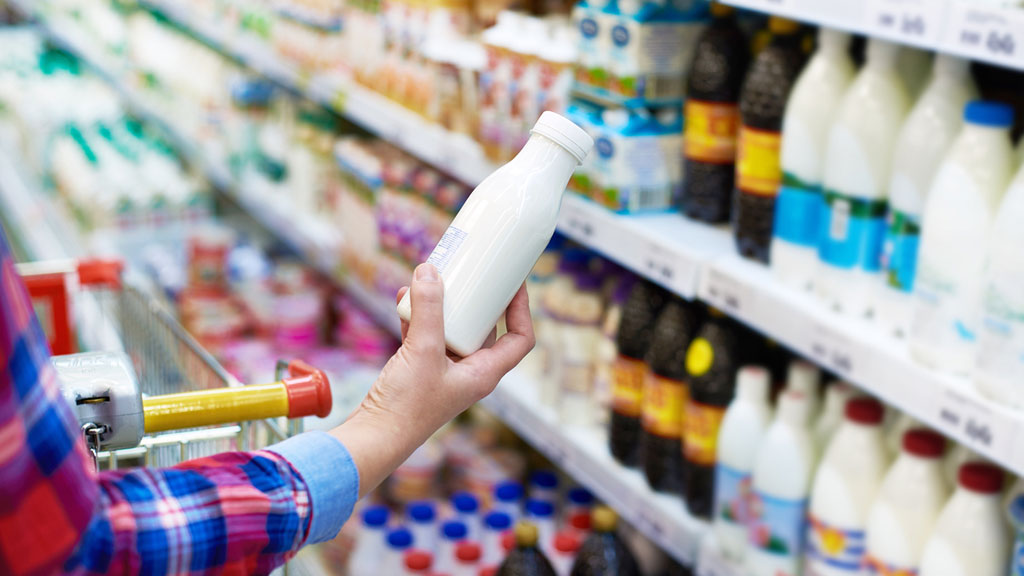When I go grocery shopping, I pay attention to marketing claims on food packaging. I take note of the “low-fat” splashed across the box of granola bars or the “low-sodium” highlighted on a bag of chips. This kind of product marketing is common, and it’s hard to ignore. A new study suggests, however, that maybe we should all be doing just that.
Published by the Journal of the Academy of Nutrition and Dietetics, the study examined packaged foods with nutrient claims to see if those with the claims were in fact healthier products. The study was led by Lindsey Smith Taillie, a research assistant professor at University of North Carolina at Chapel Hill, who had noticed the prevalence of nutrient claims in food marketing.
“We were interested in this topic because we have noticed in previous research that there is a lot of marketing on the front of food and beverage packages, and that much of this marketing could be misleading or confusing for consumers,” says Taillie. “So we wanted to test whether products that carry nutrient claims are actually healthier than other similar products that do not.”
In the study, Taillie and her co-authors examined 80 million food and beverage purchases made between 2008 and 2012 by 40,000 American households. They examined both the nutritional value of the products, as well as whether more products with nutrient claims were purchased over the course of the four years and the demographics of those purchasing them.
What the study found was that some claims—such as “low-fat” or “low-sugar”—could be misleading for a certain food or beverage’s overall healthfulness. While the foods with a nutrient claim on the package did tend have fewer calories as well as lower sugar, fat, and sodium density, there was very little consistency in what a claim like “low-fat” or “low-sugar” really means. When it comes to a claim like “low-sugar,” a product may or may not have small amounts of sugar—it just has to have less than some other product.
“A ‘reduced fat’ product only has to have less fat than some reference product,” explains Taillie. “This means a product could hypothetically carry a reduced fat product and still be high in fat in general. For example, reduced-fat Oreos contain less fat than original Oreos—but are not necessarily a low-fat food.”
The other issue with the food nutrient labels is that they put the focus on just one type of nutrient. So while a product could be low in sugar, it may be high in sodium or fat. In fact, the study found that it was the low-sodium products that contained the highest fat density.
For this reason, Taillie would argue that just reading the marketing claims on packaged foods isn’t the best way to shop for healthy, nutritious food.
“In short, even though the FDA sets rules about what is allowed to appear on claims, using these claims to make choices about what products are healthier is ill-advised because they do not necessarily reflect the food’s total nutritional quality,” says Taillie.
So rather than just skimming the front of the packages for “low-content” labels while grocery shopping, DC nutritionist Charmaine Jones would recommend paying more attention to the nutrition facts.
“Some quick questions consumers can ask themselves: Are the serving sizes the same, or at least comparable? Does the low-fat variation have the same amount of calories and/or more sugar than the version with no/low-content claim? And vice versa,” says Jones.
Ultimately, getting as much information about a food before putting it into your body is always a good idea. Jones recommends paying attention to the daily value percentage, and opting to eat products that are higher in the nutrients that you want to have more of in your diet—such as vitamins—while lower on those that you should be watching, like sodium.
Additionally, Jones would remind health-conscious shoppers that even if something is low-fat, that doesn’t mean you can eat as much of it as you want.
“Just because a product is no/low-content does not mean you should consume more of it,” says Jones. “Keep your portion sizes in check, otherwise you’re canceling out all of the effort you have put in making healthier food choices.”




















